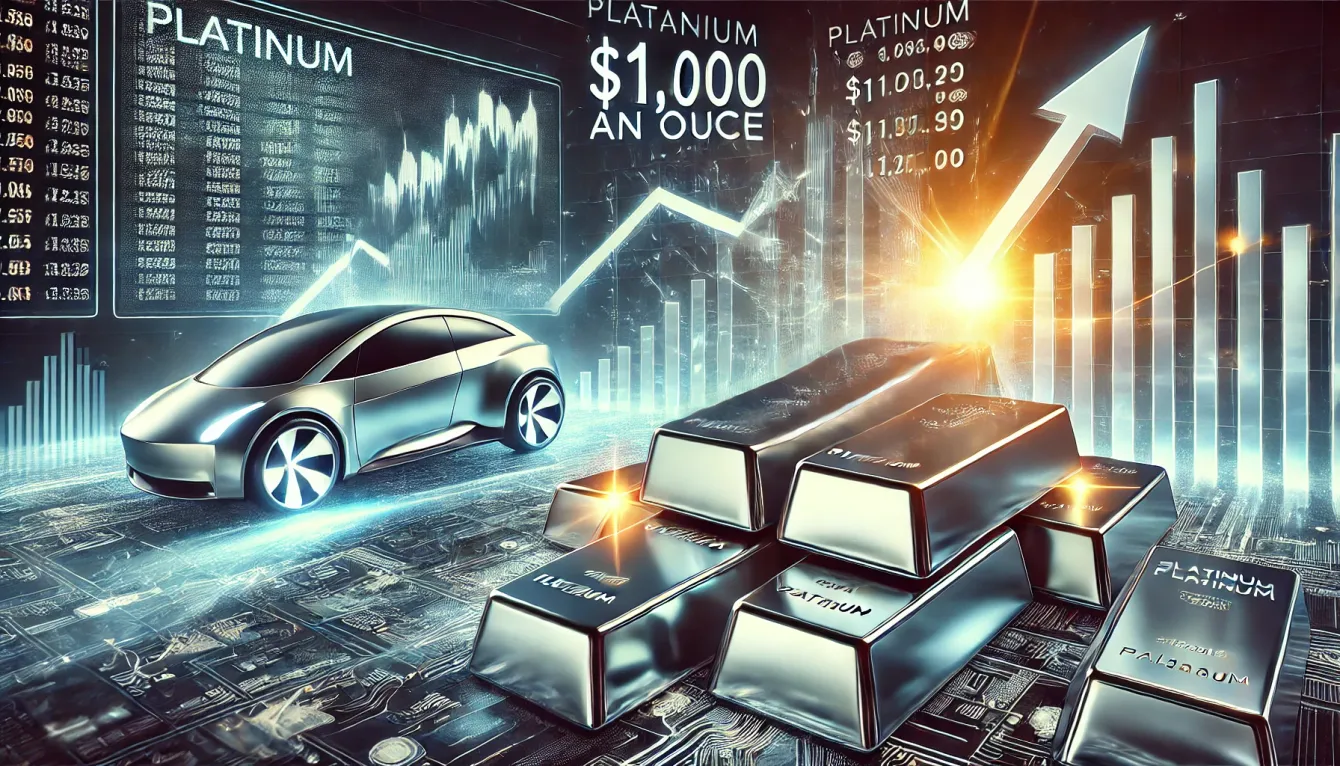Platinum prices will beat palladium in the next two years - Capital Economics
Platinum prices will beat palladium in the next two years - Capital Economics
By Neils Christensen
Published:
Updated:

(Kitco News) - While gold and silver are grabbing all the attention as bullish momentum drives prices higher, another pair in the precious metals sector deserves investors' attention, according to one research firm.
In her latest precious metals report, Ankita Amajuri of Capital Economics said she expects platinum to outperform palladium this year as the electric vehicle revolution encounters some speed bumps. Platinum is already taking a slight lead in the marketplace, with prices pushing above $1,000 an ounce.
April platinum futures last traded at $1,020 an ounce, down 0.50% on the day. Meanwhile, March platinum futures last traded at $992 an ounce, down more than 2% on the session.
“A rise in platinum-for-palladium substitution has contributed to a convergence in platinum and palladium prices since 2021,” said Amajuri. “While we expect both prices to remain close to each other over our forecast horizon, we suspect that platinum will outperform.”
Capital Economics forecasts platinum prices will end the year at $1,075 an ounce and rise to $1,150 an ounce by 2026. At the same time, the British research firm expects palladium to trade at $1,050 an ounce this year and rise to $1,100 an ounce next year.
Both platinum and palladium are critical metals used in the automotive sector. Palladium is primarily used in gasoline-powered engines, while platinum is used in both gasoline and diesel engines. Since 2015, palladium has led the Platinum Group Metals space after the diesel car industry was rocked by an emissions scandal.
In March 2022, palladium reached an all-time high of $3,488 an ounce as demand for gasoline vehicles dominated the marketplace. In comparison, platinum prices hovered around $1,100 in March 2022.
Fast-forward to today: Amajuri noted that the trend has shifted as demand for hybrid vehicles increases. Platinum is now the primary metal in catalytic converters for these vehicles because it is more efficient in lower-temperature engines.
“While the auto industry currently accounts for approximately 40% of platinum demand, we expect this figure to edge higher due to the increased use of platinum in hybrid vehicles, which are rapidly capturing market share—not only from diesel vehicles, which typically use platinum, but also from gasoline-engine vehicles, where catalytic converters have traditionally used palladium,” Amajuri said.
Although platinum is expected to outperform other PGMs, Amajuri noted that the sector is finding a broader bottom due to shifting political ideologies.
“We expect demand to rise as the adoption of EVs slows during President Trump’s term,” she said.
At the same time, Amajuri anticipates a further imbalance in PGM supplies, which could provide additional support for platinum and palladium.
“A Trump presidency could have even greater implications for the supply of palladium. Russia accounts for 40% of global palladium supply, and sanctions imposed on subsidiaries of Nornickel, the world’s largest producer, have kept a floor on prices so far. However, if President Trump follows through on his threats to impose further sanctions on Russia to pressure an end to the war in Ukraine, this could further squeeze global palladium supply,” she said. “Although PGM production from South African mines has recovered to its pre-pandemic level, ongoing challenges with power cuts make significant growth in platinum supply unlikely.”
Read the full article here: Platinum prices will beat palladium in the next two years - Capital Economics | Kitco News
